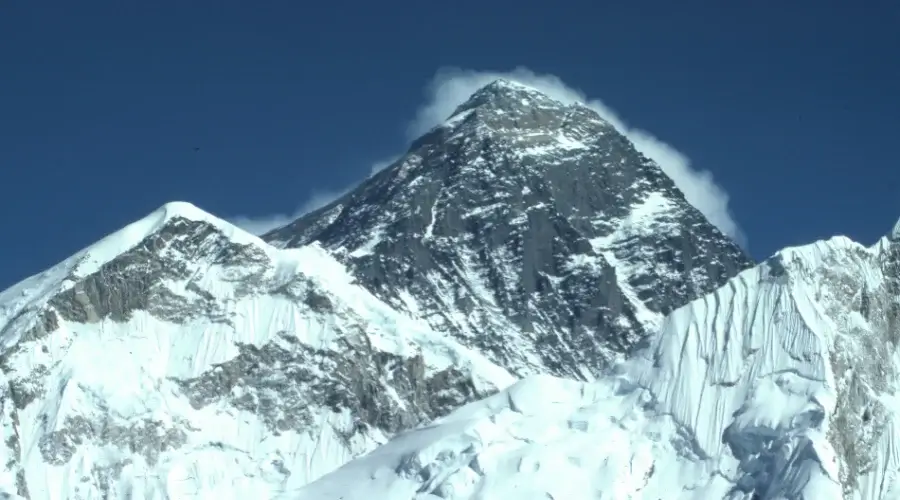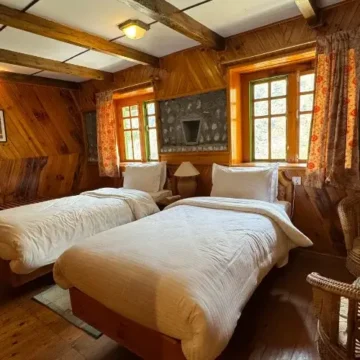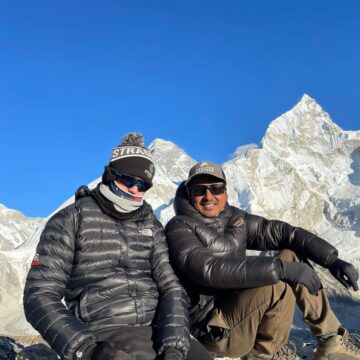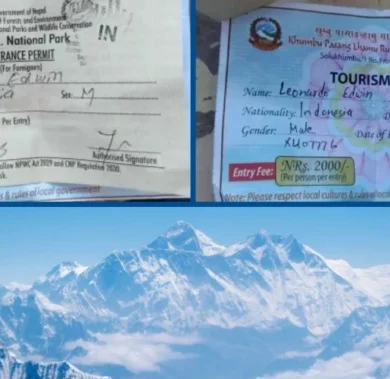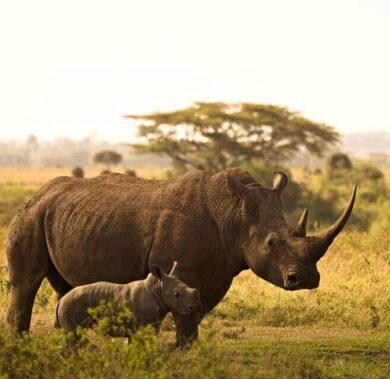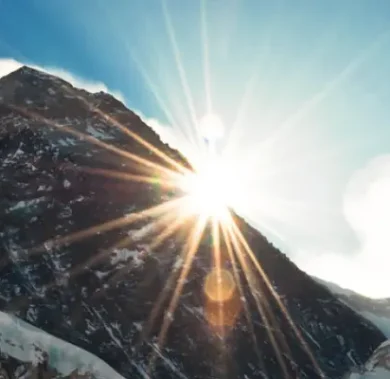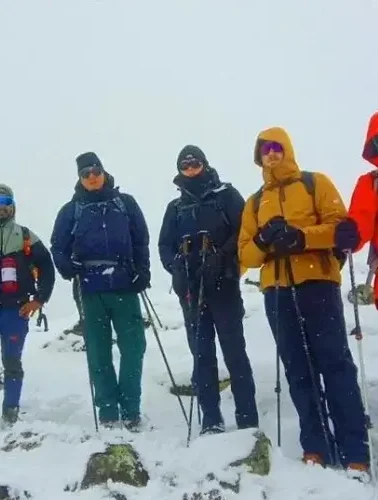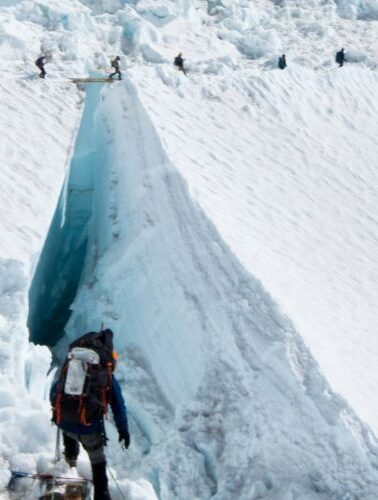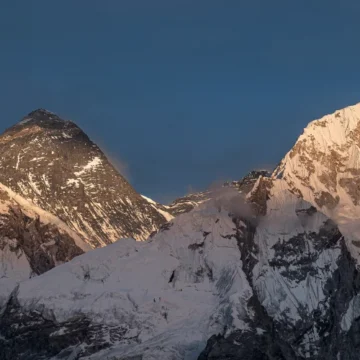
Everest Base Camp Trek Distance
Table of Contents
The EBC trekking has been exciting, desiring, and wild. You explore through it right along the Himalayan range. The journey starts from Kathmandu; you will have a short flight to Lukla, the point of origin for the Everest trekking trail. In this article, we will discuss the Everest Base Camp Trek distance.
However, once we get to Lukla, it suddenly turns breathtaking as it passes by a group of Sherpa settlements, forests, and many bridges with prayer flags all over them. Now, the visitors may immerse themselves deeper in the authentic cultural atmosphere of Nepal. Your journey will take you from the beginning to the famous market town of Namche Bazaar.
Along the way, you will enjoy stunning views of Everest and other high peaks from the Tengboche Monastery. The trek route may encounter rough obstacles like high altitude and rough terrain.
Of course, it’s true; however, ordinary words or phrases cannot explain the majestic sceneries, the solitary Khumbu glacier walk, and arriving at the base camp with delighted feelings. There are even more than only the surroundings on the walkway.
How long is the hike to Everest Base Camp?
Everest Base Camp Trek distance depends on your trekking itinerary. That will vary between 12 and 14 days, but it will typically be of standard specification. The adventure starts with a flight to Lukla from Kathmandu, but in fact, you have to move along the Khumbu region, where you can be among other hikers.
The trail moves along most of the sites, with an early visit to Phakding, a spectacular drive through Namche Bazar and Tengboche, and later a visit to beautiful places, including Dingboche and Lobuche.
It triggers a phenomenon that affects both the body and the spirit so they can find an awakening to the art of living and being closer to nature.
Conversely, you can do more of your expedition by taking the trekker trail through the Jiri or Gokyo Lakes route.
An Everest permit is a must. The Everest Base, Camp Trek distance, will take in packed detail depending on the fitness level, pace, acclimatization, weather conditions, and an individual’s physical characteristics—Everest Base Camp Trek distance with sharp dips and bumps with close surroundings.
Distance of Everest Base Camp from Lukla
Lukla is where one can lose oneself on a trek to reach Everest base camp or on treks available in the Everest region. Visitors from every portion of the globe wish to be in the base camp of the world’s tallest mountain to enlighten themselves and bring peace to them.
The distance from Lukla to Everest Base Camp is 65 kilometres. The Lukla-to-Everest Base Camp journey is, in itself, a complete adventure with breathtaking views and hardship.
The route passes through Phadking, a homey village by the Dudhkoshi River, before leading to Namche Bazaar, the large town of the Khumbu region. Acclimatization at Namche goes with exploring the scenery and visiting the local culture.
Manifesting further on the trail, one can enjoy a beautiful view of the Himalayan peaks that comprise Ama Dablam and Thamserku. Trekkers will climb through Tengboche hails for the famous Tengboche Monastery, then to Dingboche and Lobuche. The scenery will get wilder and harsher with more rocks.
In the end, Gorak Shep is the last settlement before Everest Base Camp, where the trekkers will likely have trekked for days. From the camping ground in Gorak Shep, one has to hike up further, offering stunning views of the Khumbu Icefall and the surrounding peaks.
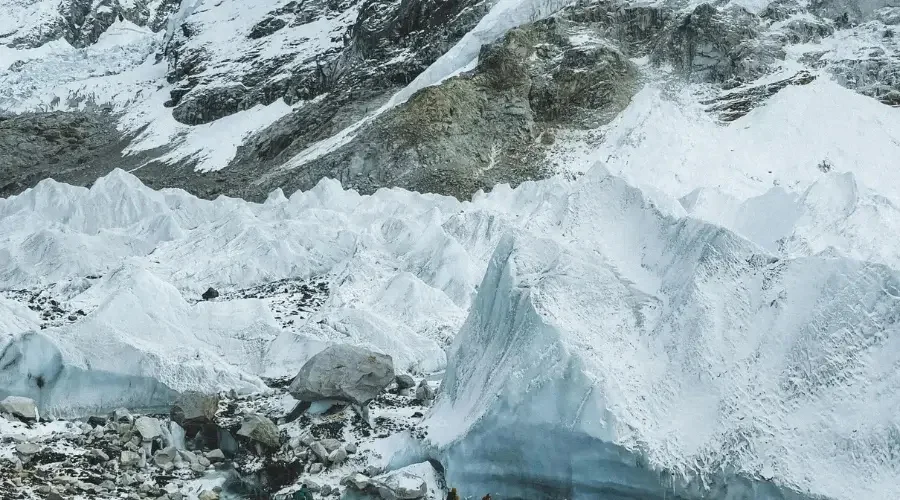
Distance of Everest Base Camp from Jiri
The distance from Jiri to Everest Base Camp is approximately 60 kilometres (about 37 miles) when considering the trekking route. This trek typically follows a longer path, starting from Jiri and passing through various villages before reaching the base camp.
The total distance from Jiri to Everest Base Camp is about 193 km (120 miles).
The distance from Kathmandu to Bhandara is 213 km (132.35 miles) and takes approximately 8-9 hours by road.
How long does Mount Everest Base Camp take?
The Everest base camp trek distance depends. The trekking lasts 12 to 14 days, whichever way you go, and according to pace breaks.
Although trekkers typically fly from Kathmandu to Lukla and later on trek through the villages and notable landforms like the Namche Bazaar, the Tengboche monastery, and Dingboche, they are compelled to scale up the altitudes gradually.
The trek requires the trekkers to have good physical fitness and the proper acclimatization to escape the highlands sickness. The trekkers stay for a few days at Base Camp and majestically watch the world’s highest peak before trekking back to Lukla, where they fly to Kathmandu.
Everest Base Camp Trek Time and Distance
Many people ask the Everest base camp how long it is. With Himalayan Masters, the trek time to the Everest Base Camp is 12 days. It includes all your walking days, flight days, and acclimatization days.
Day 01: Flight to Lukla and trek to Phakding
Flight Route: Kathmandu → Lukla
Lukla to Phakding Trek Route: Lukla → Chheplung → Thado Koshigaon → Ghat → Phakding
Distance from Lukla to Phakding: 7.8 km (5 miles)
Flight and trek duration: 25 min flight and 4 hours trek
The day begins with an enjoyable 25-minute flight from Kathmandu to Lukla, which offers stunning views of the Himalayas. The trek at the beginning of the journey involves crossing the villages of Chheplung and Ghat and then stopping at Phakding for the night.
Day 02: Trek from Phakding to Namche Bazaar
Trek Route: Phakding → Monjo → Jorsalle → Hillary Bridge (Larja Dobhan) → Namche Bazaar
Distance from Phakding to Namche: 10.4 km (6.5 miles)
Trek duration: 6-7 hours
This day includes the journey from Phakding to Namche Bazaar, which is an exhausting but rewarding experience. The trail provides beautiful views of the Dudh Koshi River and the surrounding mountains.
The trekkers arrive in Namche Bazaar, a lively town with different amenities and stunning views of the mountains.
Day 03: Rest Day at Namche Bazaar
Hike Route: Namche Bazaar → Hotel Everest View→ Namche Bazaar
Namche to Hotel Everest View Distance: 7-8 km (4-5 miles)
Trek duration: 4 hours round trip
On this day, acclimatization is the key. While taking it easy, trekkers can stroll through Namche Bazaar market, the Sagarmatha National Park Museum, or hike to the Everest View Hotel for picturesque views of Everest and its nearby mountains.
Day 04: Trek from Namche to Tengboche
Trek Route: Namche Bazaar → Khyangjuma → Phunke Tenga → Tengboche
Distance from Namche to Tengboche: 6 km (3.7 miles)
Trek duration: 5-6 hours
The path from Namche Bazaar to Tengboche yields breathtaking glimpses of Everest, Lhotse, Ama Dablam, and the other surrounding peaks. The climax of our tour is a visit to Tengboche Monastery, one of the main monasteries in the area.
Day 05: Trek from Tengboche to Dingboche
Trek Route: Tengboche → Deboche → Pangboche → Somare → Dingboche
Distance from Tengboche to Dingboche: 8 km (5 miles)
Trek duration: 6-7 hours
This day is held at Dingboche, a rugged trek offering the most beautiful Himalayan landscape. Dingboche is an enchanting village amid snow-capped mountains that displays the local culture.
Day 06: Day for Acclimatization in Dingboche
Hike Route: Dingboche → Nagarjuna Hill Top → Dingboche
Distance from Dingboche to Nagarjuna Hill Top: About 5 km (3 miles)
Trek duration: 5 hours round trip
On another day used for acclimatization, trekkers can explore the surrounding area of Dingboche, climb nearby hills acclimatizing, or relax and take in the incredible scenery.
Day 07: Trek from Dingboche to Lobuche
Trek Route: Dingboche → Dusa Kharka → Thukla/Dughla → Thukla Pass → Lobuche
Distance from Dingboche to Lobuche: 6-7 km (around 4 miles)
Trek duration: 6-7 hours

The walk from Dingboche to Lobuche is challenging but worth it. It offers gorgeous views of Khumbu Glacier and its surrounding peaks. Although the village of Lobuche has only a few facilities, it reflects rugged mountain living conditions.
Day 08: Walk from Gorakshep to Everest Base Camp
Trek Route: Lobuche → Gorakshep → Everest Base Camp → Gorakshep
Distance from Lobuche to Gorakshep: About 12 km (7.5 miles)
Trek duration: 9-10 hours
The most exciting day of the trail for all the trekkers is when they reach Everest Base Camp. The climb from Lobuche to Gorakshep is tough, but it is fantastic. After lunch in Gorakshep, trekkers trek to Everest Base Camp, where they pass a lifelong dream.
Day 09: Climb to Kala Patthar, back to Pheriche
Trek Route: Gorakshep → Kala Patthar → Gorakshep → Lobuche → Thukla → Pheriche
Distance from Kala Patthar to Pheriche: About 18 km (11 miles)
Trek duration: 8- 9 hours
Trekkers wake up early to climb Kalapathhar and enjoy the breathtaking sunrise of Everest. After the descent, they trek to Pheriche, enjoying the last views of Everest and the nearby peaks.
Day 10: Trek from Pheriche to Namche Bazaar
Trek Route: Pheriche → Somare → Pangboche → Tengboche → Namche Bazaar
Distance from Pheriche to Namche: 15-18 km (9-11 miles)
Trek duration: 6-7 hours
The Pangboche to Namche Bazaar route provides an opportunity to return to known paths and see the last view of the Himalayas before going down.
Day 11: Trek from Namche to Lukla
Trek Route: Namche Bazaar → Monjo → Phakding → Ghat → Lukla
Distance from Namche to Lukla: 18.2 km (11.3 miles)
Trek duration: 7-8 hours
On the last trekking day, trekkers will walk for a long time from Namche Bazaar to Lukla, passing through familiar villages and landscapes. At Lukla, they will experience the trek’s end and celebrate their success.
Day 12: Flying back to Kathmandu
Flight Route: Lukla → Kathmandu
Flight Distance from Lukla to Kathmandu: 136 km (84.5 miles)
Trek duration: 25 min flight
The trip ends with a scenic flight from Lukla, which provides the final view of the Himalayas before re-entry into civilization. Trekkers can use the last day of the trip to visit Kathmandu or rest after the trek.
Other Everest Region Trek Route Distance
How long is the trek to Everest base camp? When hiking to Everest Base Camp, you can take several alternative routes to enhance your experience or add variety to your journey. Here are some popular alternative routes for getting to Everest Base Camp:
- Everest View Trek: 4 km/ 38.7 miles (round trip).
- Gokyo Lakes Trek: Around 100 km/ 62.13 miles.
- Everest Base Camp and Gokyo Lakes Trek: About 130 km/ 80 miles.
- Everest Three Passes Trek: About 160 km (99 miles).
- Pikey Peak Trek: 54 km (33.55 miles).
- Island Peak Climbing: Approximately 100 km (62 miles).
- Everest Base Camp Trek with Helicopter Return: Approximately 65 km (40 miles).
- Everest Heli Trek: Approximately 65 km / 40 miles.
Distance From Everest Base Camp To Summit
The distance from Everest Base Camp (EBC) to the summit of Mount Everest is approximately 20 km/ 12.5 miles. The total ascent gain from EBC to the summit is around 3300 m/ 10827 ft, reaching an elevation of 8,848.86 m/ 29,031ft at the summit.
Distance from Everest Base Camp to Camp 1
The distance from Everest Base Camp (EBC) to Camp 1 is approximately 6.4 km (3.93 miles). The ascent gain to Camp 1 is around 701 m/ 2300 ft, reaching an altitude of approximately 6000 m/19685 ft.

Distance from Everest Base Camp to Camp 2
The distance from EBC to Camp 2 is about 10.3 kilometres (6.4 miles). The ascent gain to Camp 2 is approximately 600 m/1969 ft, bringing climbers to an elevation of around 6400 m/ 21000 ft.
Distance from Everest Base Camp to Camp 3
The distance from EBC to Camp 3 is roughly 8 kilometres (5 miles). The ascent gain to Camp 3 is about 700 m/ 2297 ft, with climbers reaching an altitude of approximately 7100 m/ 23295 ft.
Distance from Everest Base Camp to Camp 4
The distance from EBC to Camp 4 is approximately 9.5 kilometres (5.9 miles). The ascent gain to Camp 4 is around 800 m/ 2625 ft, leading climbers to an elevation of about 7900 m/ 25919 ft.
How can we reduce the difficulties of the Everest Base Camp trek distance?
- Physical fitness is the key in this case, so training is essential to be ready.
- A slow addition of pressure through altitude chairs prevents altitude sickness symptoms like headaches, nausea, and dizziness.
- You should drink water frequently during the day to protect yourself from probable dehydration in the mountain’s dry air.
- Smart packing and transport efficiency help provide a good experience while trekking to Everest Base Camp.
- Check for Everest weather conditions and terrain features during trip planning to determine what to pack regarding clothing and equipment.
- Listen to what your body needs and take chances to rest this exercise: drink some water and refresh yourself.
How far is Everest from Kathmandu?
The world’s highest mountain, Mount Everest, stands northwest of Kathmandu, Nepal. The distance between Kathmandu and the base camp is around 200 kms.
Nevertheless, trekkers to Everest Base Camp need to hike longer distances because of the rocky heights, and it takes 65 kilometres (40 miles) to go on foot from Lukla, the nearest airport to Everest, to the base camp.
The route from Kathmandu to Lukla is usually flown in a 30-minute flight, followed by treks to the Everest Base Camp through the scenic Himalayan landscape.
Want to know more?
Speak to an Expert





Sandip Dhungana
Nepal 🇳🇵
Whatsapp: +977-9823636377

